 Showcasing his repertoire on the keyboard, sampler and mixing consoleunder the alias of A Grape Dope, Chicago-based drummer John Herndon(Tortoise, Isotope 217) presents six new varying tracks that make uphis latest EP. No stranger to the producer's chair, in recent yearsHerndon has provided re-mixes for other artists, while also releasing afew of his own dub-influenced compositions via the Hefty Records Immediate Actionseries. "Action: Showered Us" leads off the disc with its infectiouslive samba school-styled rhythms and muted basslines that kick thetrack into high gear, complete with handclaps. From the Hip Hopcollective Anitcon, Dose One lends his distinct, multi-layered vocalsto the bouncy "Red Hat Attack" over busy programmed machine beats,staccato low-end and near dissonant organ drones. The compositionalsounds and juxtaposition of car crashes and toddlers-in-the-park themesmake for an odd yet very interesting track. The disc's biggest surpriseand definite highlight is the soulful ballad "I'll Spread It" whichfeatures Herndon's emotional vocoder stylings along with some tenderbass and chord progressions that lilt and sway just beautifully. Theunderlying purr of additional electronic elements round out thecomposition nicely. Herndon's interesting compositional style andshifting rhythms draw from several different influences, yet still comeacross as distinct in their own setting. The strong, at times angularcompositions on Missing Dragons should dispel the myth that drummers are only capable of counting and hitting stuff.
Showcasing his repertoire on the keyboard, sampler and mixing consoleunder the alias of A Grape Dope, Chicago-based drummer John Herndon(Tortoise, Isotope 217) presents six new varying tracks that make uphis latest EP. No stranger to the producer's chair, in recent yearsHerndon has provided re-mixes for other artists, while also releasing afew of his own dub-influenced compositions via the Hefty Records Immediate Actionseries. "Action: Showered Us" leads off the disc with its infectiouslive samba school-styled rhythms and muted basslines that kick thetrack into high gear, complete with handclaps. From the Hip Hopcollective Anitcon, Dose One lends his distinct, multi-layered vocalsto the bouncy "Red Hat Attack" over busy programmed machine beats,staccato low-end and near dissonant organ drones. The compositionalsounds and juxtaposition of car crashes and toddlers-in-the-park themesmake for an odd yet very interesting track. The disc's biggest surpriseand definite highlight is the soulful ballad "I'll Spread It" whichfeatures Herndon's emotional vocoder stylings along with some tenderbass and chord progressions that lilt and sway just beautifully. Theunderlying purr of additional electronic elements round out thecomposition nicely. Herndon's interesting compositional style andshifting rhythms draw from several different influences, yet still comeacross as distinct in their own setting. The strong, at times angularcompositions on Missing Dragons should dispel the myth that drummers are only capable of counting and hitting stuff.
Two new shows just for you. We have squeezed out two extended release episodes for this weekend to get you through this week. They contain mostly new songs but there's also new issues from the vaults. The first show features music from Rider/Horse, Mint Field, Robert Aiki Aubrey Lowe, Anastasia Coope, ISAN, Stone Music, La Securite, Bark Psychosis, Jon Rose, Master Wilburn Burchette, Umberto, Wand, Tim Koh, Sun An, and Memory Drawings. The second episode has music by Laibach, Melt-Banana, Chuck Johnson, X, K. Yoshimatsu, Dorothy Carter, Pavel Milyakov, Violence Gratuite, Mark Templeton, Dummy, Endon, body / negative, Midwife, Alberto Boccardi, Divine. Cow in Maui from Veronika in Vienna. Get involved: subscribe, review, rate, share with your friends, send images! |




 With a warning on the disc advising of potential damage to certain audio systems (headphone use not advisable), the self-titled second release from Chicago avant-rock quartet Sterling lets loose a hybrid of compositions that could be the bastard child of jazz, classical and metal, conceived during a Dario Argento flick.
With a warning on the disc advising of potential damage to certain audio systems (headphone use not advisable), the self-titled second release from Chicago avant-rock quartet Sterling lets loose a hybrid of compositions that could be the bastard child of jazz, classical and metal, conceived during a Dario Argento flick.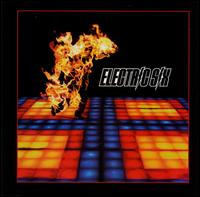 Do you want to know how they keep starting fires? The Electric Sixfirst gained attention with their single, "Danger! High Voltage," whichlaid down the blueprint for their dance garage style and penchant forabsurd lyrics ("Fire in the disco / Fire in the Taco Bell!"), deliveredwith conviction by singer Dick Valentine and (alleged guest) JackWhite. Their sound was a strange brew of disco beats, surf squalls, andAndrew W.K. party riffing. While that single was immensely enjoyable,its novel, what-the-hell-is-this attraction hinted that the ElectricSix might find it hard to keep it up over the course of an entire LP.On Fire,the Detroit residents look to hold you in their grasp with songs thatdescribe their favorite pastimes, which include fire, the night,dancing, nuclear war, women, bars, and synthesizers. Often, theirbacchanalian single mindedness leads to redundancy, as on the track"Gay Bar," which commands that together we should "start a nuclear war/ at the gay bar," being immediately followed by the song "Nuclear War(On the Dance Floor)." Regardless, the former track is prettyconvincing, coming off as the hard rock party anthem of the not todistant future (it has already spawned one of those dancing cat onlineflash videos). Electric Six manages to top "Danger!" in unusual,unbalanced brilliance with "I'm the Bomb." Maybe I'm just a sucker fora song about, what else, dancing and women, which uses the word"gerrymandering." "Three, two, one, I'm the bomb," declares the chorus,"and I'm ready to go off on your shit." They're sublimely cocky, with aflair for the dramatic and a powerful desire to be looked at. I mean,they yell "Solo!" before they start a guitar solo at least twice.That's how much they want you to pay attention to them. Still, evenwith those occasional sparks, 'Fire' contains songs like "ElectricDemons In Love," "Naked Pictures (Of Your Mother)," and "She's White"which all smear together in a blur of generic lack of inspiration.Their original themes never vary much, and the frequent overlap tendsto make for a tedious listen, in total. Fire doesn't do much todispel the label of novelty that "Danger!" found attached to it, andthat's what makes the moments of quirk so fun.
Do you want to know how they keep starting fires? The Electric Sixfirst gained attention with their single, "Danger! High Voltage," whichlaid down the blueprint for their dance garage style and penchant forabsurd lyrics ("Fire in the disco / Fire in the Taco Bell!"), deliveredwith conviction by singer Dick Valentine and (alleged guest) JackWhite. Their sound was a strange brew of disco beats, surf squalls, andAndrew W.K. party riffing. While that single was immensely enjoyable,its novel, what-the-hell-is-this attraction hinted that the ElectricSix might find it hard to keep it up over the course of an entire LP.On Fire,the Detroit residents look to hold you in their grasp with songs thatdescribe their favorite pastimes, which include fire, the night,dancing, nuclear war, women, bars, and synthesizers. Often, theirbacchanalian single mindedness leads to redundancy, as on the track"Gay Bar," which commands that together we should "start a nuclear war/ at the gay bar," being immediately followed by the song "Nuclear War(On the Dance Floor)." Regardless, the former track is prettyconvincing, coming off as the hard rock party anthem of the not todistant future (it has already spawned one of those dancing cat onlineflash videos). Electric Six manages to top "Danger!" in unusual,unbalanced brilliance with "I'm the Bomb." Maybe I'm just a sucker fora song about, what else, dancing and women, which uses the word"gerrymandering." "Three, two, one, I'm the bomb," declares the chorus,"and I'm ready to go off on your shit." They're sublimely cocky, with aflair for the dramatic and a powerful desire to be looked at. I mean,they yell "Solo!" before they start a guitar solo at least twice.That's how much they want you to pay attention to them. Still, evenwith those occasional sparks, 'Fire' contains songs like "ElectricDemons In Love," "Naked Pictures (Of Your Mother)," and "She's White"which all smear together in a blur of generic lack of inspiration.Their original themes never vary much, and the frequent overlap tendsto make for a tedious listen, in total. Fire doesn't do much todispel the label of novelty that "Danger!" found attached to it, andthat's what makes the moments of quirk so fun.  Feedback as primary means of making live music seems to date from 1964. That was the year that Max Neuhaus debuted his Fontana Mix - Feed (see
Feedback as primary means of making live music seems to date from 1964. That was the year that Max Neuhaus debuted his Fontana Mix - Feed (see 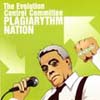 Remember that link of the week with the Oscar Meyer Weiner songanswering machine lady talking? Well, Mark Gunderson, aka The EvolutionControl Committee opens his current full-length masterpiece with thatvery same woman speaking along to the "Star Spangled Banner" as the"Star Spangled Bologna." Only a few years before people like Kid 606and Dsico were marrying Missy Elliott with Joy Division, the ECCcombined two flavors in perhaps one of the most groundbreaking (yetoverlooked) 7" singles of the 1990s, The Whipped Cream Mixes,where Public Enemy raps were matched with the music of Herb Alpbert& the Tijuana Brass. But the ECC aren's just mash-ups and cut-ups,as the Committee (much like Seeland label bosses, Negartivland)provides a healthy amount of gimmicky cheese, twisting and mutatingwords and songs into sounding like what they want to hear. While thisdisc compiles some of the finer moments of the ECC in the last fewyears since, it does also provide some brand new material forunderground superstar potential. "I Want A Cookie" jumps out first as avery aggressive self-help sounding woman gives empowerment advice overhorn-blaring hip 1960s-retro spy chase music. The classic "Rocked ByRape" is also included with Dan Rather's cut up samples over the ECC'sown AC/DC rip off riffs. The rhythmic usage is clever while the outputis absolutely hilarious, with examples like "Dramatic Alien Torture" /"Cancer Death Threat Fleeing for Their Lives" / "Voodoo Bizarre LoveTriangle," it's hard to keep up and impossible to tune out whenplaying. Four years after this song first surfaced, it has not lost itscharm, however it would have been nice to have a new revisit with allof Dan's quotes from the 2000 US Election Night overnight fiasco!(Search for some of those quotes online some time.) There are someother memorable moments like "Sex Re-Education," the cut-up 1950s-erasex education speech from a dad to his son, but at 29 tracks, therereally is a ton of forgettable filler.
Remember that link of the week with the Oscar Meyer Weiner songanswering machine lady talking? Well, Mark Gunderson, aka The EvolutionControl Committee opens his current full-length masterpiece with thatvery same woman speaking along to the "Star Spangled Banner" as the"Star Spangled Bologna." Only a few years before people like Kid 606and Dsico were marrying Missy Elliott with Joy Division, the ECCcombined two flavors in perhaps one of the most groundbreaking (yetoverlooked) 7" singles of the 1990s, The Whipped Cream Mixes,where Public Enemy raps were matched with the music of Herb Alpbert& the Tijuana Brass. But the ECC aren's just mash-ups and cut-ups,as the Committee (much like Seeland label bosses, Negartivland)provides a healthy amount of gimmicky cheese, twisting and mutatingwords and songs into sounding like what they want to hear. While thisdisc compiles some of the finer moments of the ECC in the last fewyears since, it does also provide some brand new material forunderground superstar potential. "I Want A Cookie" jumps out first as avery aggressive self-help sounding woman gives empowerment advice overhorn-blaring hip 1960s-retro spy chase music. The classic "Rocked ByRape" is also included with Dan Rather's cut up samples over the ECC'sown AC/DC rip off riffs. The rhythmic usage is clever while the outputis absolutely hilarious, with examples like "Dramatic Alien Torture" /"Cancer Death Threat Fleeing for Their Lives" / "Voodoo Bizarre LoveTriangle," it's hard to keep up and impossible to tune out whenplaying. Four years after this song first surfaced, it has not lost itscharm, however it would have been nice to have a new revisit with allof Dan's quotes from the 2000 US Election Night overnight fiasco!(Search for some of those quotes online some time.) There are someother memorable moments like "Sex Re-Education," the cut-up 1950s-erasex education speech from a dad to his son, but at 29 tracks, therereally is a ton of forgettable filler.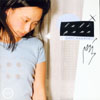 With the release of their second full-length album, 2001's Scary World Theory, Lali Puna have not only secured their place as not just another Notwist "side project," but have become one of my favorite groups. It's tough to arrange a schedule when your time is divided amongst a number of other bands, as Marcus Acher (1/2 of the core duo) knows very well. In the time between releases, the group has taken the opportunity to leak out an unsurfaced song and its apparent dub counterpart.
With the release of their second full-length album, 2001's Scary World Theory, Lali Puna have not only secured their place as not just another Notwist "side project," but have become one of my favorite groups. It's tough to arrange a schedule when your time is divided amongst a number of other bands, as Marcus Acher (1/2 of the core duo) knows very well. In the time between releases, the group has taken the opportunity to leak out an unsurfaced song and its apparent dub counterpart.
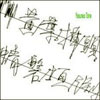 This is one of the finer noise albums and one that challenges other noise performers to up the ante. While the method in which this record was created is interesting, the actual sounds and rhythms that compose the album are its most attractive elements by far. Yasunao Tone was created by taking various Chinese poems and converting the characters into wave forms via a character recognition program.
This is one of the finer noise albums and one that challenges other noise performers to up the ante. While the method in which this record was created is interesting, the actual sounds and rhythms that compose the album are its most attractive elements by far. Yasunao Tone was created by taking various Chinese poems and converting the characters into wave forms via a character recognition program. For the second installation in his Audio Tour Diary series, Dave Pajopresents three more stripped-down tunes, warmly recorded in Chicago,Bloomington and Los Angeles over the past months. The Papa M arranged "Blackis the Color," showcases his tasteful acoustic guitar picking style withdistant swoops of synthesizer for a reworking that makes the tune his own.The airy tone of his laid back vocals are jolted on the way out with astern, spoken delivery of the song's title. From his association withStereolab, the piano and strings-complimented "Mary Was the Kind," paystribute to a dear, departed friend Mary Hansen. The strumming guitar progressionsand catchy lyrics and melody on the traditional sounding "World's GreatestSin" are evident of just how inside the southern folk songwriting style Pajocan get, both musical and lyrically. A hint of accordion-type tones make itall the more convincing. Nested in the last few minutes of the track is anbeautifully uplifting multi-tracked guitar and strings incidentalcomposition which is just perfect as is. It should be interesting to see ifPajo works any of the tunes from his on-the-road sessions into his next fulllength disc, or if this will be the only recorded performances as they havea certain charm of being slightly undressed.
For the second installation in his Audio Tour Diary series, Dave Pajopresents three more stripped-down tunes, warmly recorded in Chicago,Bloomington and Los Angeles over the past months. The Papa M arranged "Blackis the Color," showcases his tasteful acoustic guitar picking style withdistant swoops of synthesizer for a reworking that makes the tune his own.The airy tone of his laid back vocals are jolted on the way out with astern, spoken delivery of the song's title. From his association withStereolab, the piano and strings-complimented "Mary Was the Kind," paystribute to a dear, departed friend Mary Hansen. The strumming guitar progressionsand catchy lyrics and melody on the traditional sounding "World's GreatestSin" are evident of just how inside the southern folk songwriting style Pajocan get, both musical and lyrically. A hint of accordion-type tones make itall the more convincing. Nested in the last few minutes of the track is anbeautifully uplifting multi-tracked guitar and strings incidentalcomposition which is just perfect as is. It should be interesting to see ifPajo works any of the tunes from his on-the-road sessions into his next fulllength disc, or if this will be the only recorded performances as they havea certain charm of being slightly undressed. 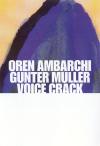 On the lowest level, this disc is a dense stream of fascinating soundsthat highlight the interaction between these innovative improvisers.The cacophony of buzzing and whirring is not unlike Müller and VoiceCrack's other project, Poire_Z, and Ambarchi's processed guitarcombines very well with their "cracked everyday electronics"aesthetic—almost anti-technology in its espousing of the commonplace.There's a lot to listen for on this disc and it all seems like itbelongs, from sine waves to sci-fi tones remeniscent of the sounds inthe new Matrix film (but not of the college freshman philosophizing,thankfully). Attempts to put this music on in the background seemfutile as it's just too attention-demanding. A few minutes in, it'shard to ignore the storm of sound threatening to tear the room apart.Even when it's a foreboding wall of mechanical noise, this music feelshuman in its production and arrangement, remeniscent more of thepotential for directly conveying emotion with non-traditionalinstrumentation than of sterile machine music. The disc opens with hightones and some of Müller's "selected percussion" playing a slow,metronomic beat, and the percussive rhythms throughout this CD areprobably more overt (relatively speaking) than some of his other work.The piece is pretty nonlinear, which is nice as it's not a blatant"build toward something and come back" formula. It ends with somehypnotic, quiet drones which continue into the second track, wherethey're joined by some clicking rhythms, buzzing, and slowly modulatedoscillations as the music gets a little frenetic. "Grounding Oysters"is static for most of its duration, exploring the subtle interactionbetween a range of sounds; and "Oystered" ends the disc with more hightones and rhythms. This CD definitely fits well in the canon of theseplayers. While I really enjoy it, I'm not sure if there's much todistinguish it from their other work. But the subtle elements that eachmember of this collaboration provides make it a fine listen for fans ofthis type of sound.
On the lowest level, this disc is a dense stream of fascinating soundsthat highlight the interaction between these innovative improvisers.The cacophony of buzzing and whirring is not unlike Müller and VoiceCrack's other project, Poire_Z, and Ambarchi's processed guitarcombines very well with their "cracked everyday electronics"aesthetic—almost anti-technology in its espousing of the commonplace.There's a lot to listen for on this disc and it all seems like itbelongs, from sine waves to sci-fi tones remeniscent of the sounds inthe new Matrix film (but not of the college freshman philosophizing,thankfully). Attempts to put this music on in the background seemfutile as it's just too attention-demanding. A few minutes in, it'shard to ignore the storm of sound threatening to tear the room apart.Even when it's a foreboding wall of mechanical noise, this music feelshuman in its production and arrangement, remeniscent more of thepotential for directly conveying emotion with non-traditionalinstrumentation than of sterile machine music. The disc opens with hightones and some of Müller's "selected percussion" playing a slow,metronomic beat, and the percussive rhythms throughout this CD areprobably more overt (relatively speaking) than some of his other work.The piece is pretty nonlinear, which is nice as it's not a blatant"build toward something and come back" formula. It ends with somehypnotic, quiet drones which continue into the second track, wherethey're joined by some clicking rhythms, buzzing, and slowly modulatedoscillations as the music gets a little frenetic. "Grounding Oysters"is static for most of its duration, exploring the subtle interactionbetween a range of sounds; and "Oystered" ends the disc with more hightones and rhythms. This CD definitely fits well in the canon of theseplayers. While I really enjoy it, I'm not sure if there's much todistinguish it from their other work. But the subtle elements that eachmember of this collaboration provides make it a fine listen for fans ofthis type of sound. 
